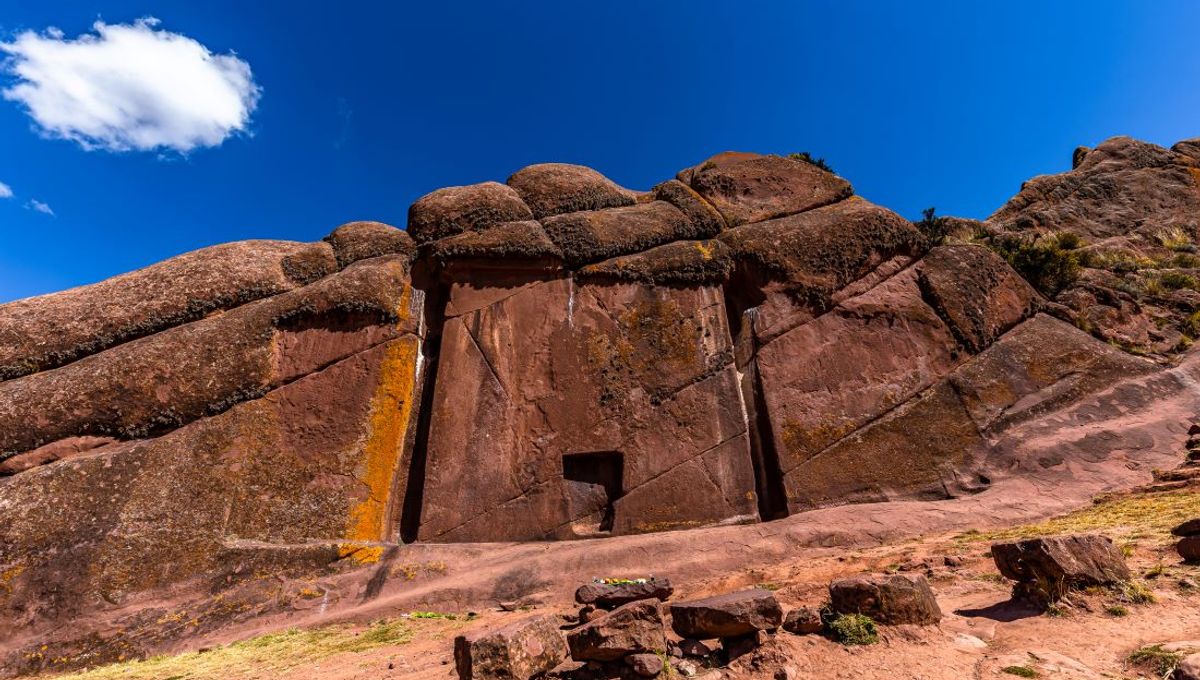
On the side of the Hayu Marca Mountain, southern Peru, a large, mysterious stone doorway is carved into the rockface. While no one knows the true origins of the Aramu Muru doorway, its existence sheds light on the long and complex history of ancient Peruvian culture.
Located near Lake Titicaca, the largest freshwater lake in South America, local tour guide Jose Luis Delgado Mamani stumbled upon the structure in 1996. Since its modern discovery, Aramu Muru, or “The Gate of the Gods”, has been surrounded by myths and legends regarding its construction and its use.
For the last 4,000 years, the surrounding area of the mountains and Lake Titicaca was home to a number of ancient Indigenous communities, including the Inca civilization ruled by Pachacuti Inca Yupanqui. The Inca believed this enormous lake was where the world was born, and where your spirit returns after death.
It’s widely believed that the site of Aramu Muru served as a pilgrimage and worship ground for the Inca, with stories of the supernatural properties the doorway possesses.
Believed to be used for ceremonial or astronomical purposes, the impressive structure sits 7 meters (23 feet) high and 7 meters wide, with a smaller door-shaped indentation in the center. Those who visit the structure claim to feel safe and at peace resting their forehead inside the smaller indentation.
While little is known of the door’s origin, it’s believed to predate the Inca, with culturally significant tales of its uses coming from a number of Native American communities.
The mythology commonly points to the doorway being a portal or “star gate”, used to travel to other worlds. Some also believe the door is used by the Gods as a way for them to visit and inspect their kingdoms.
Despite being widely thought to predate the Inca, Aramu Muru gets its name from an Inca legend.
It’s said that while evading the Spanish, an Inca priest named Aramu Muru took a golden solar disk known as “the key of the gods of seven rays” that was kept in Koricancha temple in Cusco. Taking it over 450 kilometers (280 miles) from the temple to the stone doorway, the priest placed the disk on the door. Acting as a portal, the doorway allegedly opened, and the priest passed through it and disappeared.
While believing the legend may offer a source of comfort for some, the story of Aramu Muru also serves as a stark reminder of the desperation felt by a civilization ravaged by, and eventually lost to, invading forces.
As the Inca land was invaded by Spanish conquistadors, Incan gold and their natural resources were stolen, and in their place, the invading armies left smallpox which quickly spread and ultimately contributed to the fall of the Inca empire in 1592.
Source Link: No One Knows What Peru’s Mysterious “Gate Of The Gods” Was For